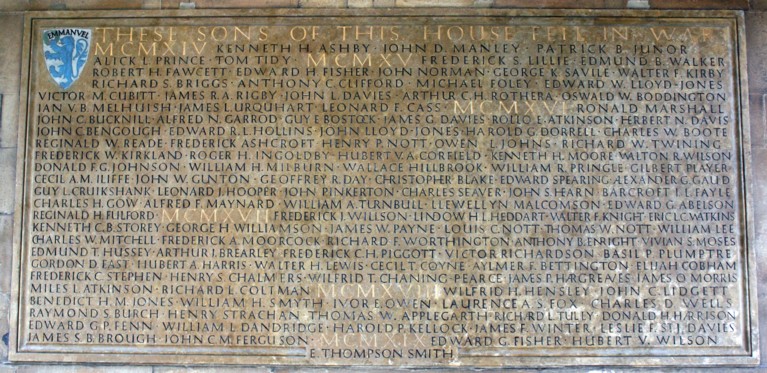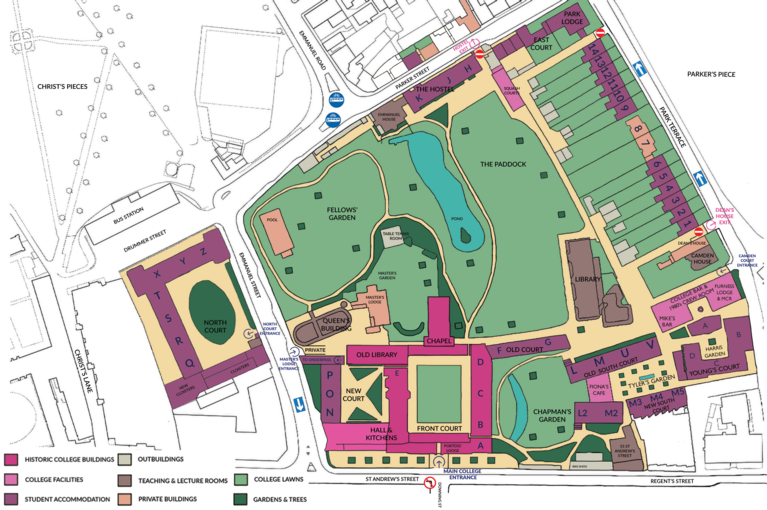World War I
In the summer of 1914, Emmanuel College was preparing for the new academic year, which would begin in October. It was expecting to admit about 80 new students.
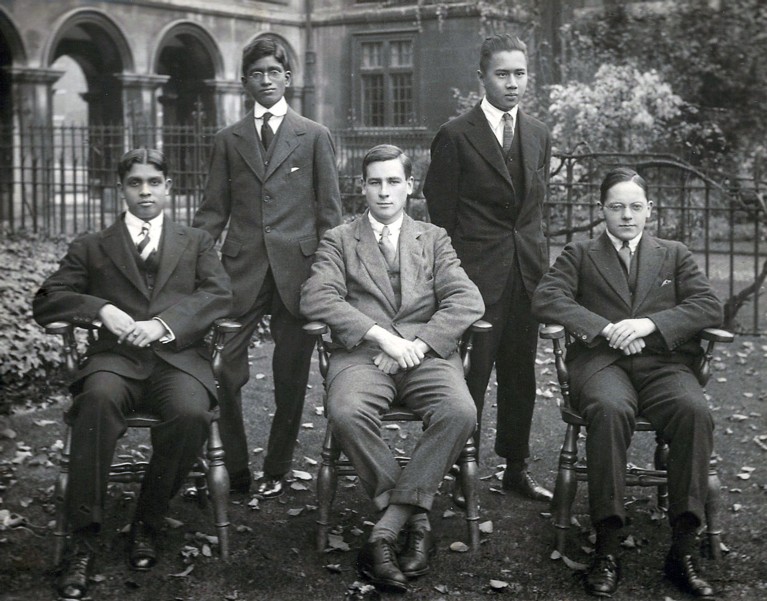
The outbreak of war at the end of July, however, was immediately followed by a wave of enthusiastic enlistment. This reduced the number of new admissions to 57, and it also depleted the numbers of second and third year students. The introduction of conscription in meant that student numbers continued to fall drastically over the next few years. Those who did come were either overseas students, men exempted from military service, or ex-military personnel who had been wounded or discharged. In 1916, only five new students were admitted. After the war ended, the college was almost overwhelmed by the number of returning students: in 1919, for instance, there were 233 admissions.
The college's governing body, which in 1914 comprised the Master and fourteen Fellows, had been reduced to half that size by 1916. Although only a few Fellows served in the army, many undertook other work. Two became army chaplains and two worked with the Field Ambulance service. One went to the Munitions Inventions Board and another to the Censor’s Office. The Fellowship also suffered one great loss: Geoffrey Day, who taught History, and was very popular with colleagues and undergraduates alike. He enlisted at the beginning of 1914, and was killed on the Western Front two years later. Fortunately, this was to be the only fatality among the Fellowship. Many of the College staff went to fight, and two were to be killed.
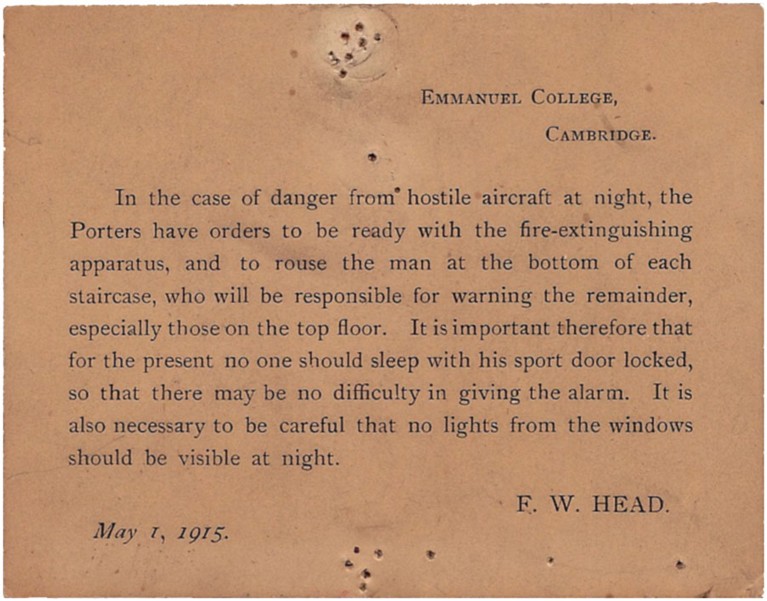
As the war progressed, various regulations were issued, but happiliy, food rationing did not become necessary until 1917. In 1914 the newly built North Court was taken over by the War Office for the duration. It housed Cadet officers following special short courses of instruction. These men dined in college and also had access to the sports Pavilion and Boathouse. In 1917 the Cadet Officers of 'C' Company produced a souvenir 'Chronicle' of their time in the College, called 'The Glad Rag'. In 1918, another group of 'C' Company men produced a similar publication, entitled 'Cheerio'. This included a cartoon which proposed a new crest for Emmanuel.
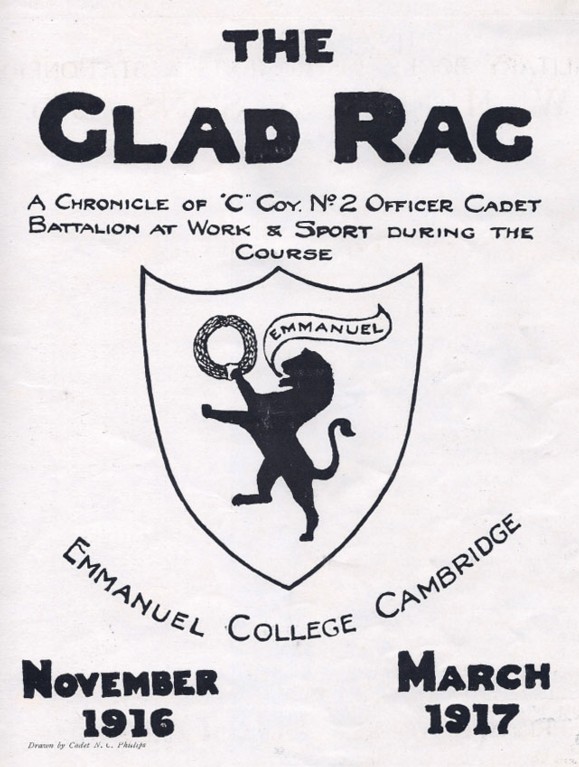
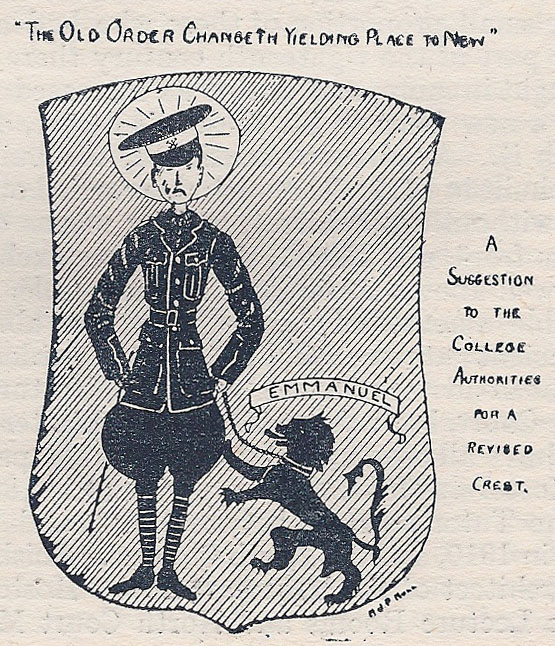
The College kept in touch with as many serving men as possible. P. W. Wood, one of the College Fellows, preserved the letters he received from Emmanuel men. Extracts from them were published as 'Letters from the Fronts' in the Wartime Editions of the College Magazine. The word 'Fronts' was carefully chosen, because some Emmanuel men served in Africa and India. P.W. Wood edited and distrubuted the wartime editions of the Magazine, and received many grateful replies from the recipients. Captain Thomas Howard, for instance, valued the “thoughtfulness of the College Authorities in keeping so well in touch with members who are now away from Cambridge. I feel quite sure that we must all appreciate most vividly the knowledge that we are still remembered and still part of Emmanuel.”
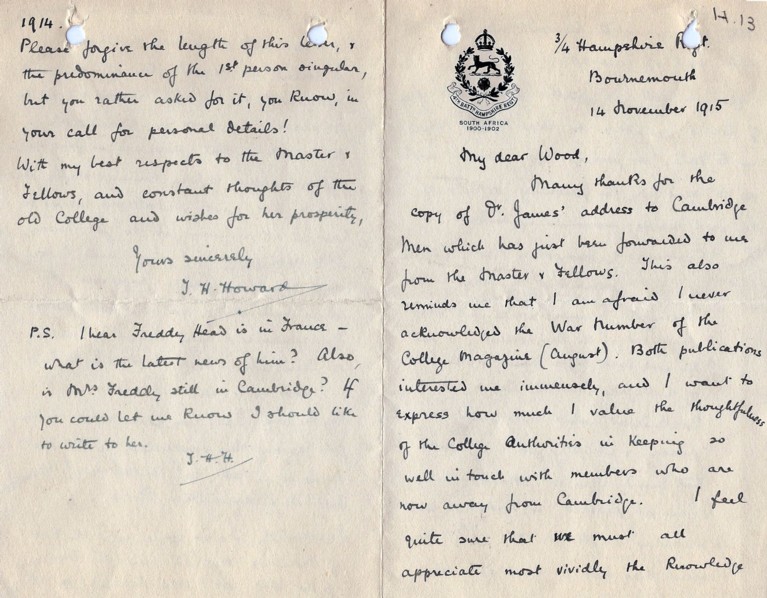
Sadly, the death toll of Emmanuel men rose steadily as the war progressed: five men were killed in 1914, nineteen in 1915, and 45 in 1916. Many men were stationed together, such as Thomas, Cameron & Paton Nott. These three brothers served together in the Sixth Battalion of the Gloucestershire Regiment. They came to Emmanuel in 1907, 1912 & 1913 respectively. Paton was killed by shrapnel in April 1916. His commanding officer wrote that he had “never seen such grief displayed by all ranks over any previous casualty”. A year later Thomas & Cameron were killed together in their dugout at Villers Faucon. This was destroyed by a hidden German mine.
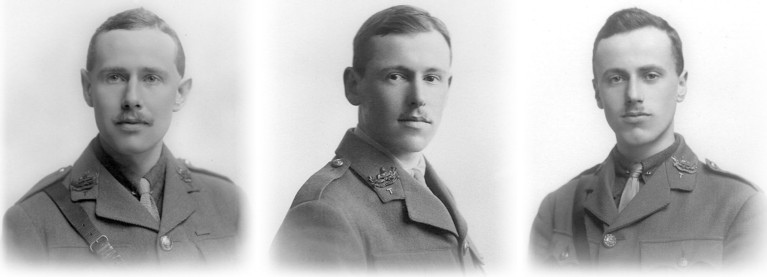
By the end of the war, almost 130 Emmanuel men had been killed. Their names are recorded on the College War Memorial. This was designed and carved by the sculptor Ernest Gillick, and erected in the chapel cloisters in January 1923.
